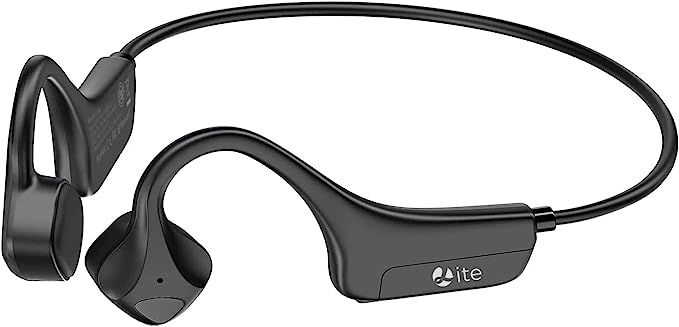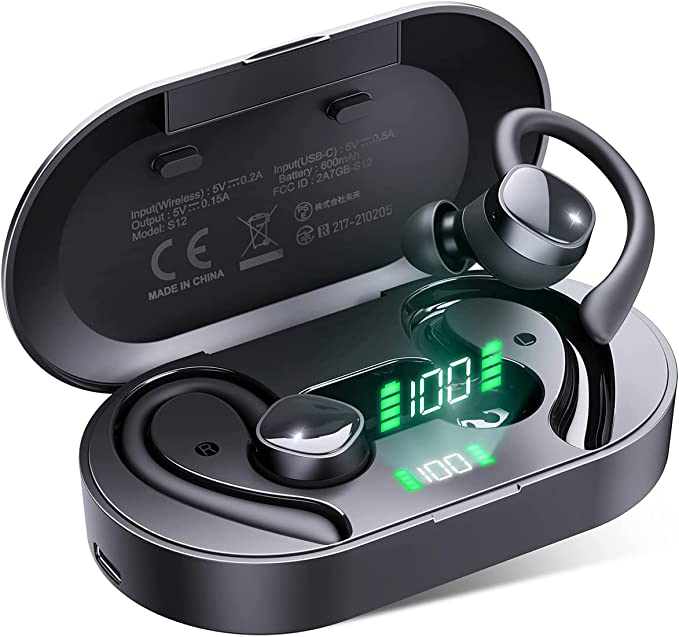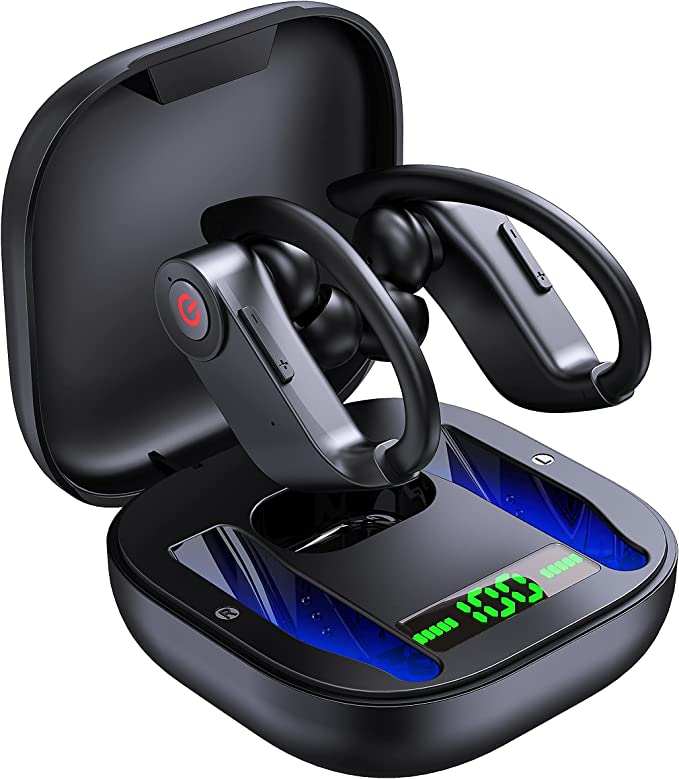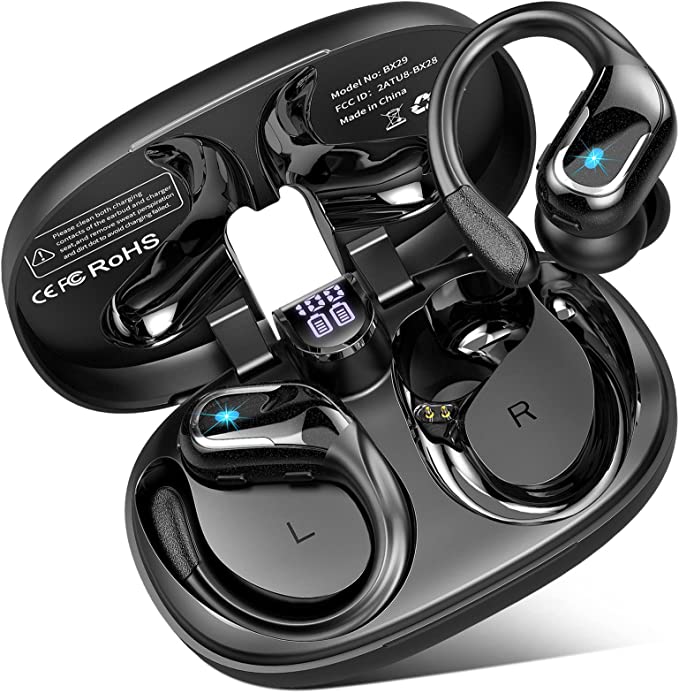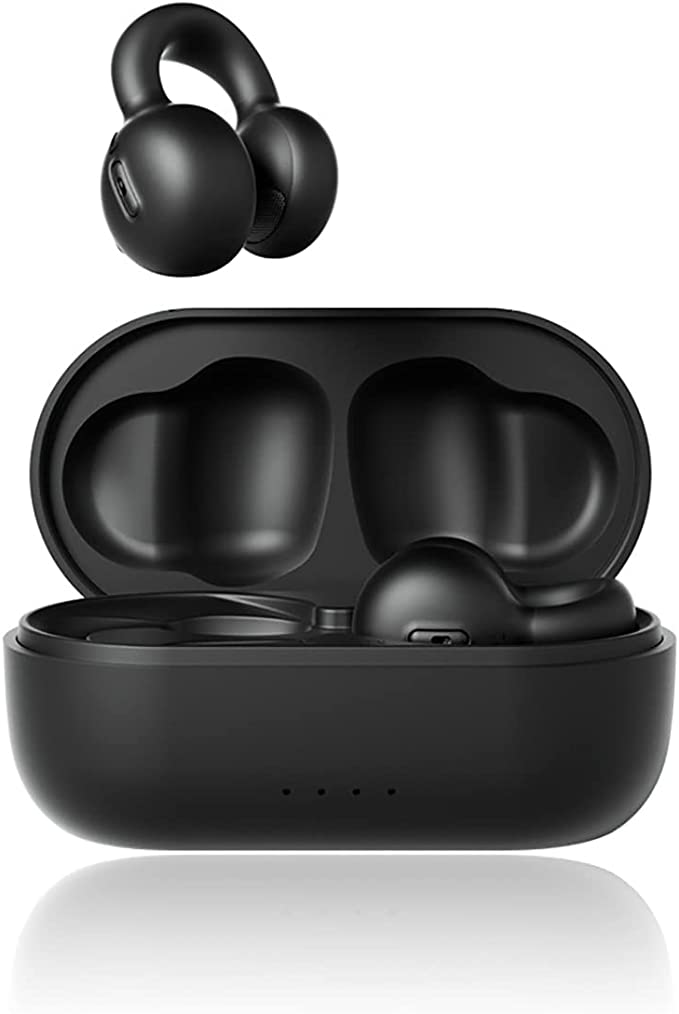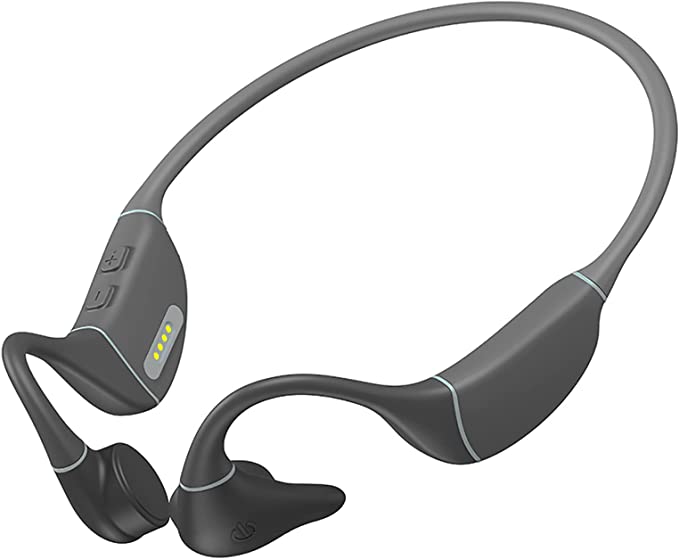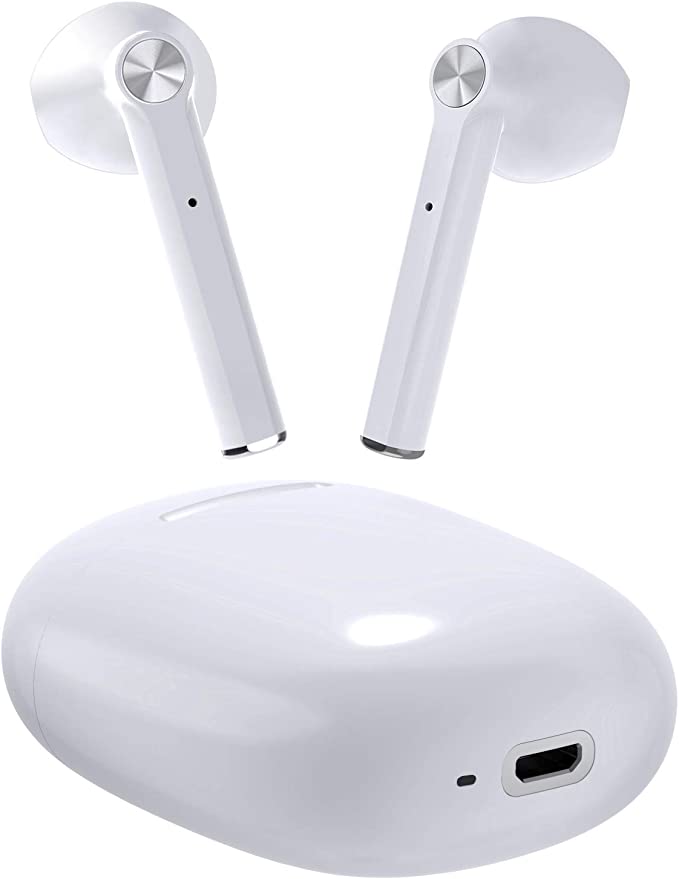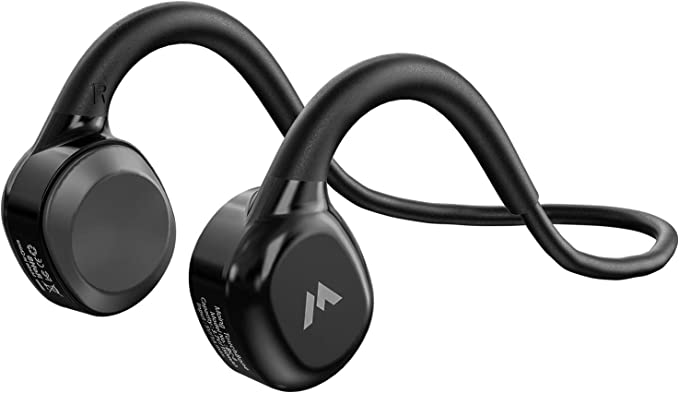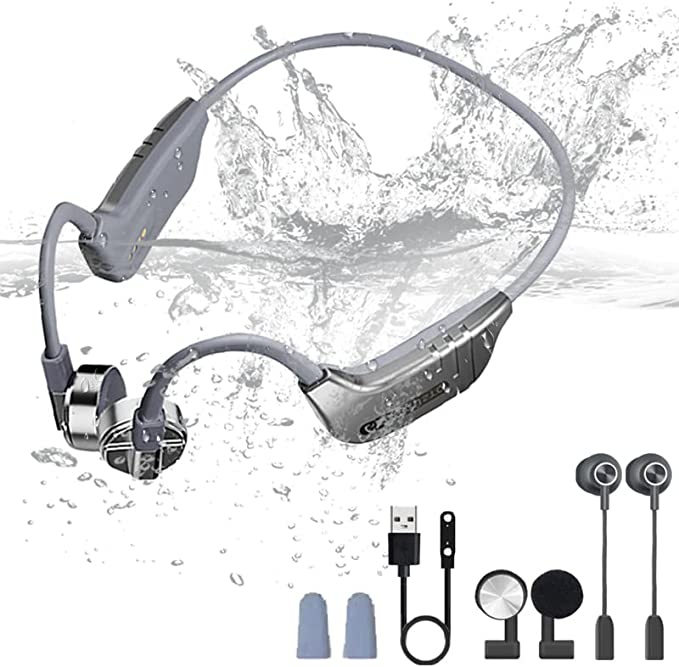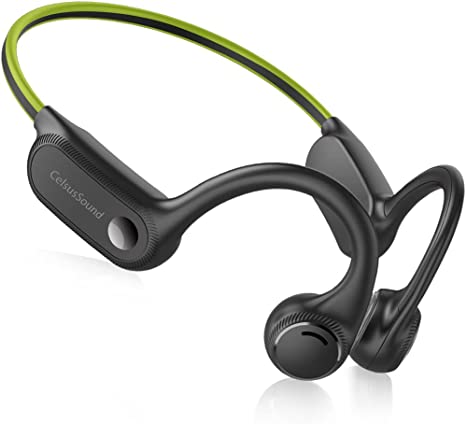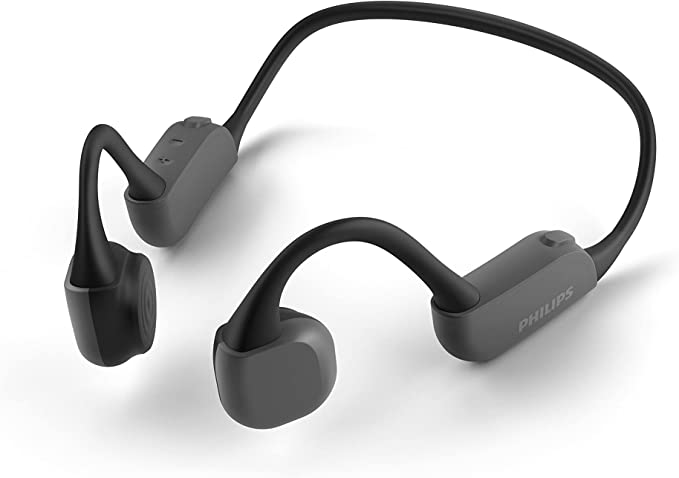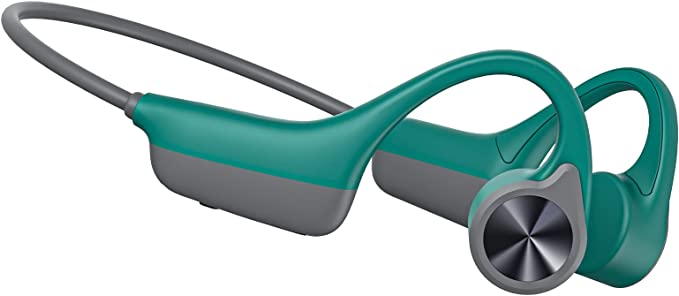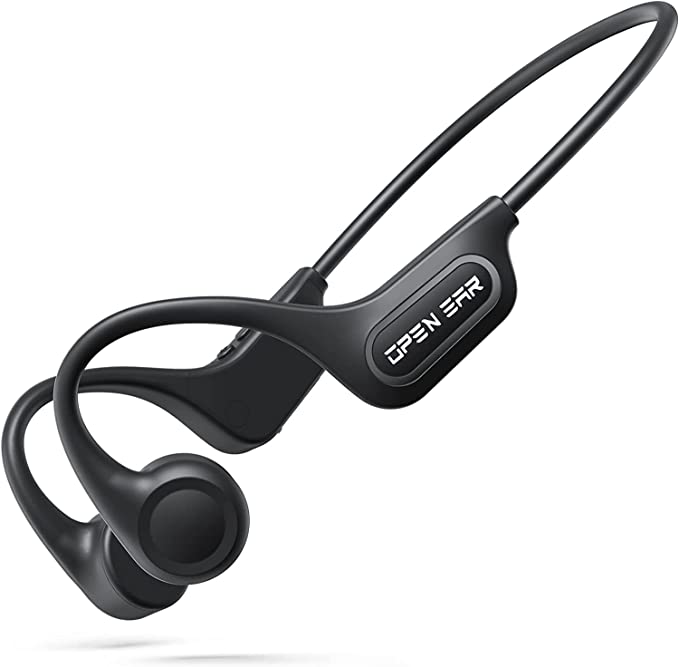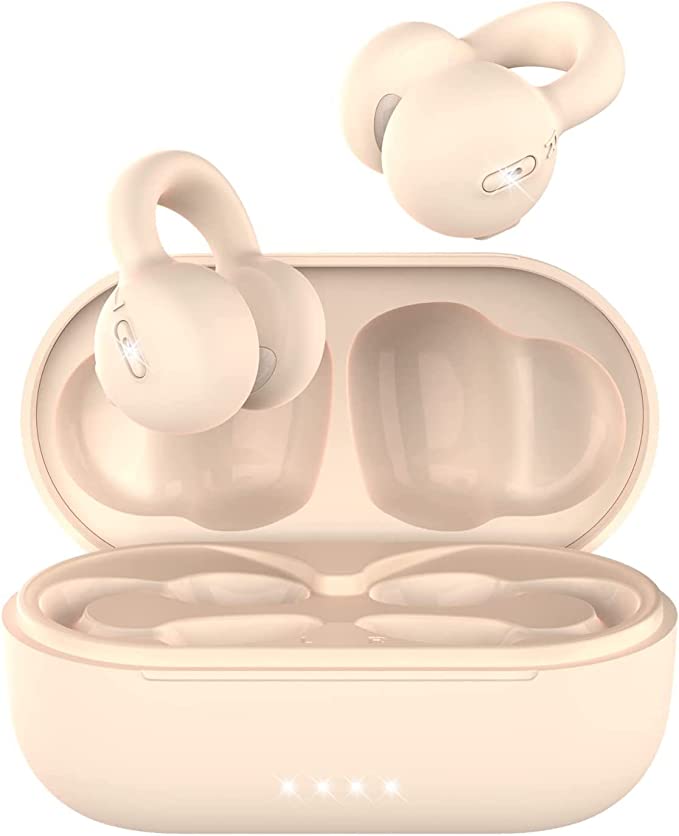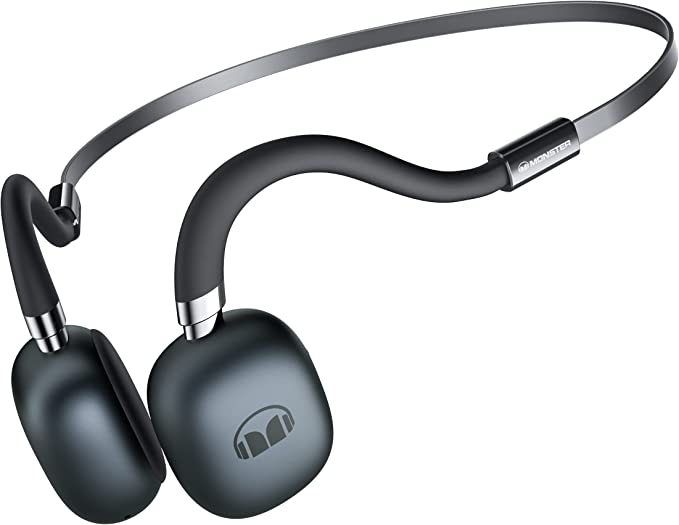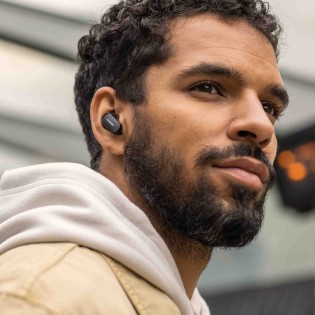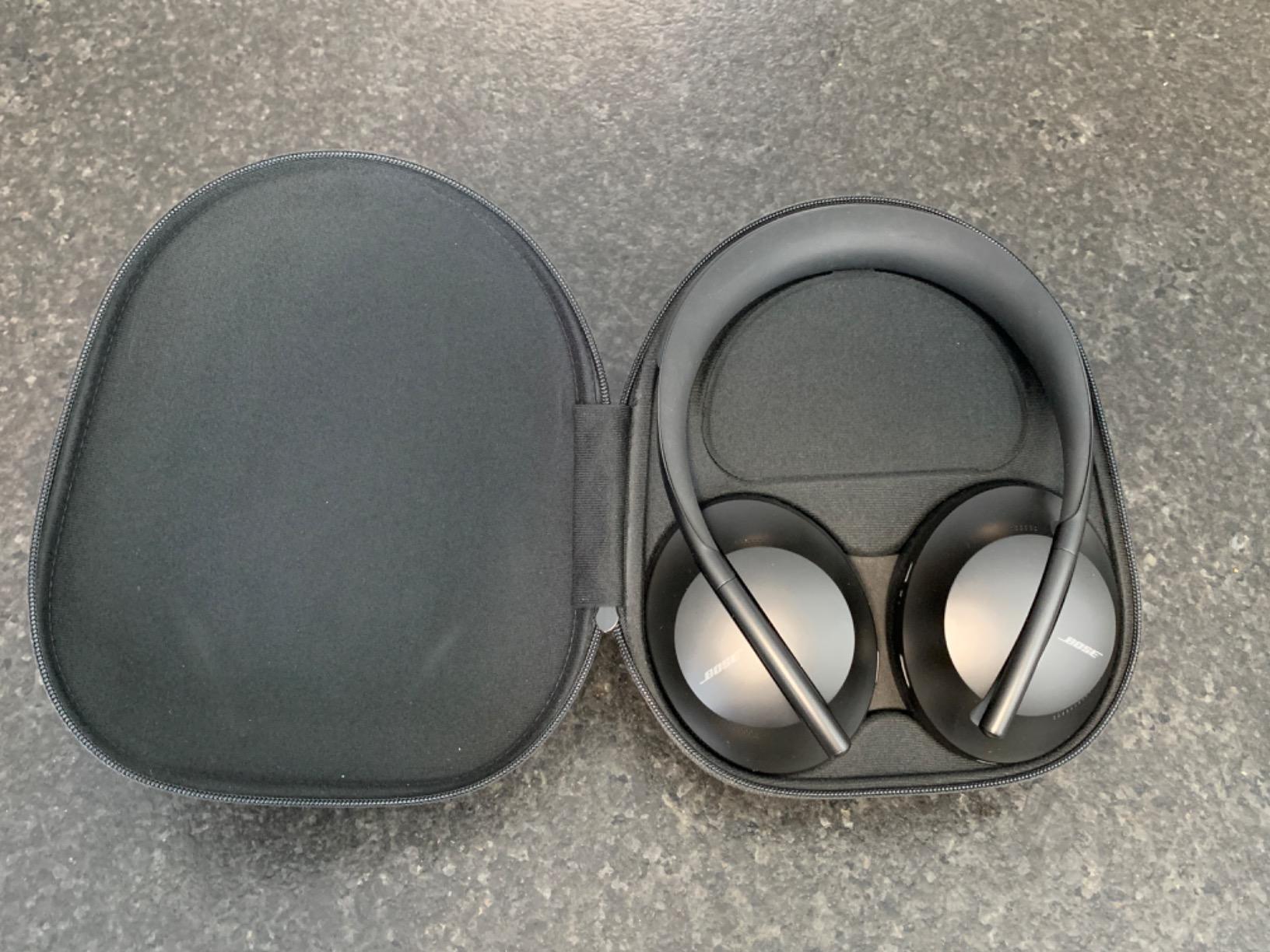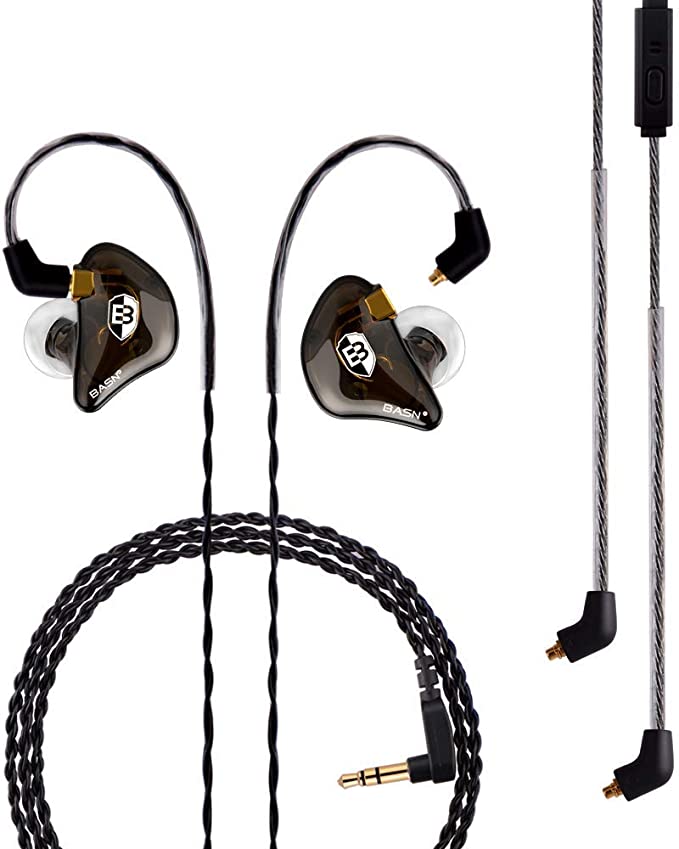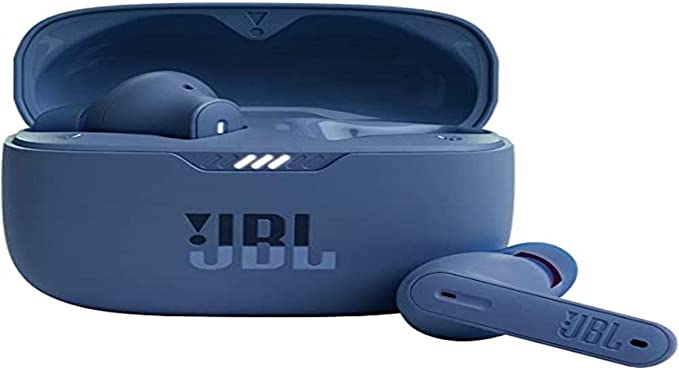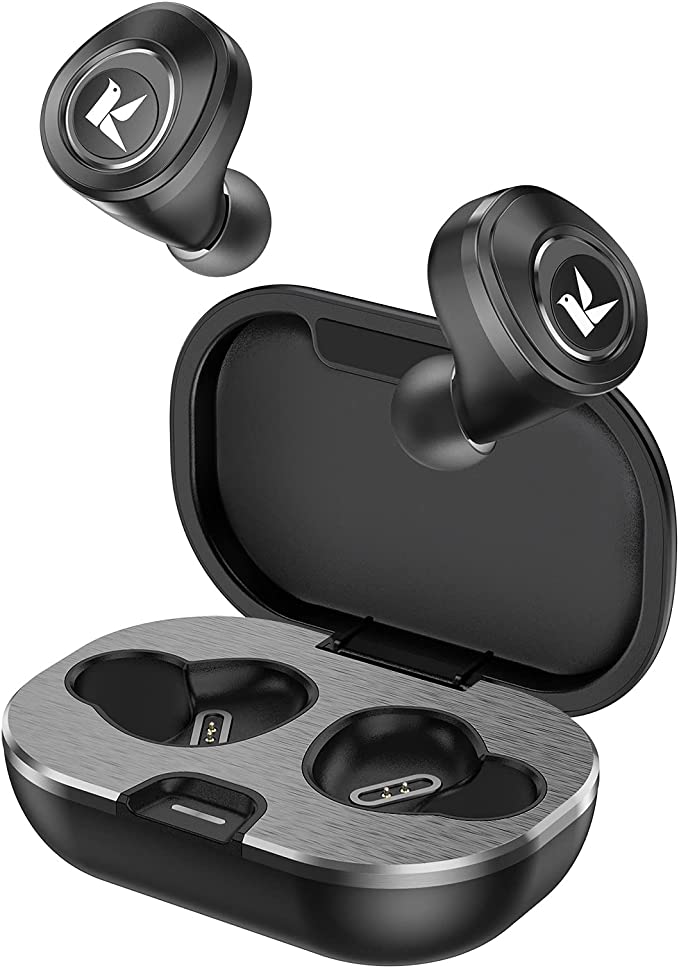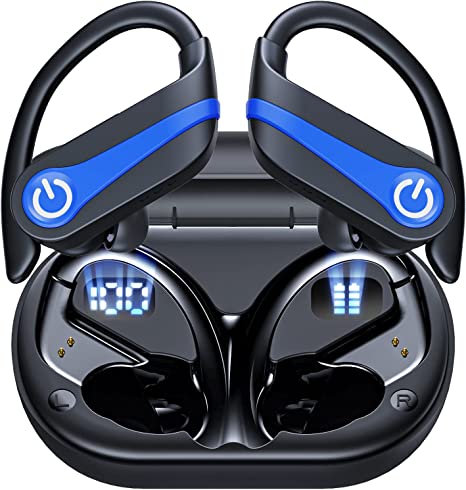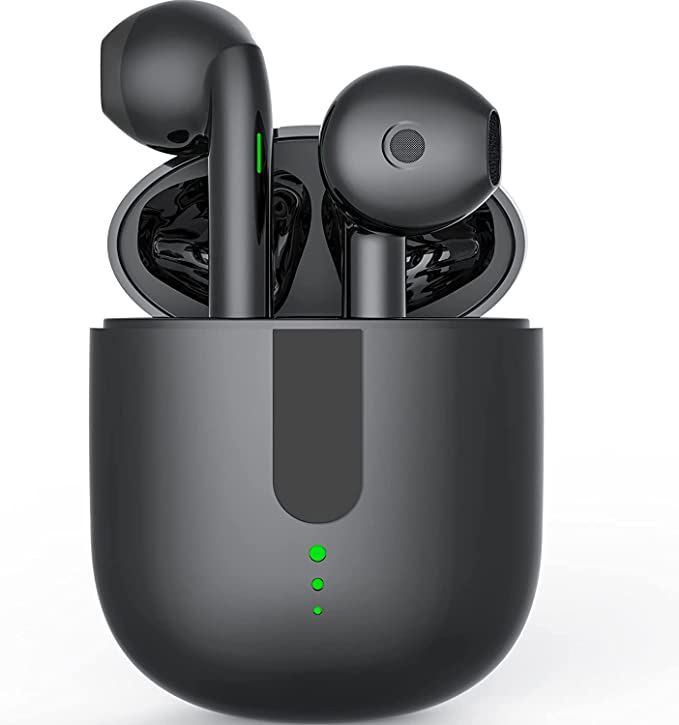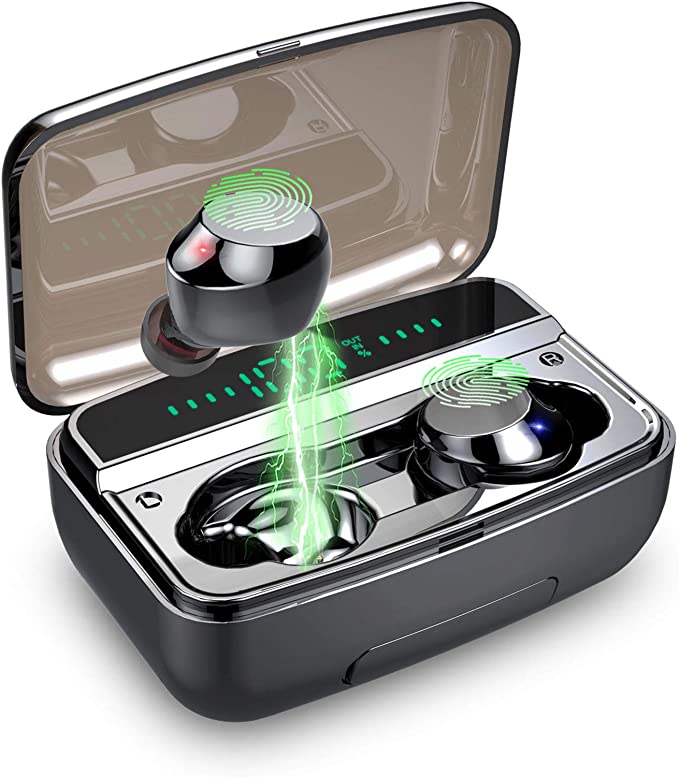Headphone Tech Unmasked: What "Bone Conduction" & "Noise Cancelling" Really Mean
Update on Nov. 14, 2025, 9:54 p.m.
In the crowded marketplace of personal audio, promises are loud. Product pages shout about “revolutionary” features and “immersive” experiences, often burying consumers under an avalanche of technical jargon. Two terms that frequently appear, especially in the realm of sports headphones, are “Bone Conduction” and “Noise Cancelling.” They sound impressive, suggesting futuristic technology and serene listening environments. But what happens when these labels don’t align with reality?
Consider a product like the TEDATATA BL09 Sports Headphones. Its description is a checklist of desirable features: “Noise Cancelling Bone Conduction Earphones,” “Ultralight IPX4 Waterproof,” and “Bluetooth 5.1.” On paper, it seems to be the ideal companion for an active lifestyle. However, a glance at the sparse user feedback reveals a stark contradiction—a lone, one-star rating claiming the product is definitively “Not Noise Cancelling or Bone Conduction.”
This discrepancy isn’t just about one product; it’s a perfect case study for a widespread issue. It prompts a crucial question for every consumer: Are we getting the technology we’re paying for, or just the marketing terms? Join us as we move beyond the hype, decode the science behind these claims, and empower you to become a more discerning listener. This is your guide to understanding what these features truly are—and what they are not.

The “Bone Conduction” Claim: Sound Through Your Skull, or Just Near Your Ear?
One of the most captivating terms in modern audio is “bone conduction.” It implies a fundamentally different way of hearing, bypassing the conventional path of sound through the ear canal.
The Science: Two Paths to the Inner Ear
To understand bone conduction, you first have to know how you typically hear. Most sound is air-conducted. Sound waves travel through the air, funneled by your outer ear into the ear canal. They cause your eardrum to vibrate, which in turn moves the tiny bones of the middle ear. These vibrations are then transferred to the cochlea, the fluid-filled, spiral-shaped organ in your inner ear that translates mechanical vibrations into nerve impulses your brain interprets as sound.
Bone conduction offers a shortcut. Instead of traveling through the air and middle ear, it sends vibrations directly through the bones of your skull—usually the cheekbones or temporal bones—straight to the cochleas. The effect is the same—the fluid inside the cochlea vibrates, stimulating the hair cells—but the delivery route is entirely different. A famous historical example is Ludwig van Beethoven, who, as his hearing declined, would reportedly clamp a rod between his teeth and touch the other end to his piano, allowing him to perceive the music’s vibrations through his jawbone.
Why It Matters: The Appeal of the Open Ear
The primary benefit of true bone conduction technology is that it leaves your ear canals completely unobstructed. This creates two significant advantages:
- Situational Awareness: For runners, cyclists, and urban pedestrians, this is a game-changer. You can enjoy music or a podcast while remaining fully aware of your surroundings—the sound of traffic, an approaching vehicle, or a person calling your name. It’s a critical safety feature.
- Comfort and Accessibility: Some users find traditional earbuds uncomfortable or prone to falling out. For individuals with certain outer or middle ear conditions that prevent the use of conventional headphones, bone conduction can be the only viable option for personal audio.
Decoding the Marketing: True Tech vs. “Open-Ear” Design
This brings us back to our case study. A product marketed as “Bone Conduction Earphones” that receives feedback stating it is “Not … Bone Conduction” presents a red flag. True bone conduction headphones have specific design cues: they feature small transducer pads that rest firmly on the cheekbones, in front of the ears, deliberately leaving the ear canal open.
Many products, however, use an “open-ear” design that simply uses small, traditionally-styled speakers positioned just outside the ear canal. While these also don’t block ambient sound, they operate on the principle of air conduction, just like any other speaker. This is a crucial distinction. These designs can be prone to sound leakage and may not provide the same clarity as true bone conduction, especially in noisy environments. The “On Ear” form factor listed for the BL09 is ambiguous and, combined with the user feedback, strongly suggests it may be an open-ear air conduction device rather than a true bone conduction one. When shopping, look for explicit mentions of “transducers” and designs that clearly show contact points on the cheekbone, not just a speaker grille pointing at the ear.

The “Noise Cancelling” Enigma: Creating Silence or Just Blocking Sound?
Alongside bone conduction, “Noise Cancelling” is one of the most sought-after—and misunderstood—features in headphones today. The promise of a quiet sanctuary from the world’s clamor is powerful, but the term itself can be misleading if not properly qualified.
The Two Methods of Quiet: Passive vs. Active
Noise reduction in headphones is achieved in two fundamentally different ways:
-
Passive Noise Isolation: This is a physical, not electronic, method. It relies on creating a barrier to block external sound waves. Think of dense foam in over-ear cups or the snug seal of silicone-tipped in-ear monitors that act like earplugs. The effectiveness is entirely dependent on the quality of the seal and the materials used. It’s acoustic insulation, plain and simple.
-
Active Noise Cancellation (ANC): This is a sophisticated electronic process. Headphones with ANC use built-in microphones to capture the sound of your environment. An internal chip analyzes this incoming sound wave and generates an exact inverse sound wave—an “anti-noise.” This anti-noise is then played through the headphone’s speakers along with your music. When the original ambient sound and the new anti-noise wave meet at your ear, they cancel each other out through a principle called destructive interference.
True ANC is most effective against constant, low-frequency sounds like the drone of an airplane engine, the hum of an HVAC system, or road noise. It is far less effective against sudden, high-frequency sounds like conversations or a barking dog. Because open-ear and bone conduction headphones are designed to let ambient sound in, it is technologically contradictory for them to also offer effective noise cancellation.
Reading Between the Lines
When a product like the BL09—which hints at an open-ear design—also claims “Noise Cancelling” without specifying “Active” (ANC), it almost certainly refers to a minimal degree of passive isolation offered by the physical presence of the device on your head. The user’s flat denial that it is “Not Noise Cancelling” aligns with this technical reality. For consumers, the key is to look for the specific acronym “ANC.” If it’s not there, the “noise cancelling” promise is likely just a byproduct of the physical design, not a dedicated electronic feature.
Beyond the Hype: Translating Specs You Can Trust
While headline claims can be dubious, the detailed specification sheet often contains more reliable clues about a product’s true capabilities. Let’s decode some of the other specs listed for our case study.
-
IPX4 Water Resistance: The “IP” stands for Ingress Protection. The first digit (replaced by ‘X’ here) rates solid particle protection, and the second rates liquid protection. An IPX4 rating means the device is protected from splashing water from any direction. For an athlete, this is a crucial spec. It certifies that the headphones can withstand heavy sweat and a run in the rain. However, IPX4 is not waterproof. You cannot submerge them. For most workout scenarios, IPX4 is a sufficient and reliable standard.
-
Bluetooth 5.1: This is a modern and stable version of Bluetooth. It ensures a reliable connection and decent power efficiency. The claimed 20-meter (66-foot) range is an ideal-condition figure; in reality, walls and interference will reduce this, but it indicates solid wireless hardware.
-
Battery Life (180mAh for 12 hours): The claim of 12 hours of playtime from a 180mAh battery is respectable but highly optimistic. Real-world battery life is always dependent on listening volume—playing music at 75% volume can consume double the power of playing it at 50%. This spec should be seen as an “up to” ceiling, not a guaranteed average.
-
Drivers and Microphone (${\phi}10\text{mm}$ 32Ω, -42Db): The headphones use standard 10mm dynamic drivers with an impedance of 32 Ohms, making them easy to power by any smartphone. The microphone sensitivity of -42Db is also a common, acceptable standard for headset mics. However, these numbers don’t tell the whole story. The user’s complaint of “horrible volume” points not to the specs themselves, but to the quality of the internal amplifier and the overall efficiency of the drivers. Even with standard specs, poor implementation can lead to poor performance.

Conclusion: Your Toolkit for Becoming a Smarter Audio Consumer
Navigating the world of headphones doesn’t have to be a gamble. By using a critical eye and understanding the science behind the marketing, you can move from being a target of hype to an informed buyer. The TEDATATA BL09, with its conflicting claims, serves as a valuable lesson: high-tech labels are easy to apply, but genuine technology is harder to implement.
Here is a simple toolkit for your next headphone purchase:
- Question the Contradictions: Does a headphone claim to be both “Bone Conduction” (open-ear) and “Noise Cancelling”? This is a technological paradox. Be wary.
- Look for Specifics, Not Buzzwords: “Noise Cancelling” is vague. “Active Noise Cancellation (ANC)” is a specific, verifiable feature. Look for the details.
- Translate Ratings into Reality: An IPX4 rating is for sweat, not swimming. Understand what the numbers mean for your actual use case.
- Trust User Feedback on Performance: While specs can describe components, only real-world experience can validate performance like volume, call quality, and comfort.
Ultimately, the goal is to find a device that genuinely meets your needs. Whether that requires true bone conduction for situational awareness, powerful ANC for travel, or simply a reliable, sweatproof design for the gym, understanding the technology is the first and most important step. It allows you to filter out the noise and focus on what truly matters: the sound.
